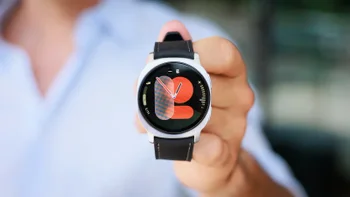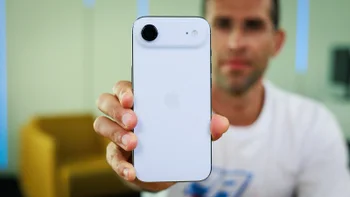Is 2019 the year of the in-display fingerprint scanner?

While major smartphone makers are yet to implement even the simplest form of in-display fingerprint authentication — with Apple outright rejecting the entire concept in favor of Face ID — Asian companies are having a ball with the emerging technology.
A regular fingerprint scanner, located on the back or front of the device — or wherever else — offers some sort of tactility. You may mistake it for the camera on your recent Samsung Galaxy phone and give the lens a good swipe or two, but you'll quickly be able to move your finger to the right spot without having to look. In-display fingerprint readers, on the other hand, offer no such properties. A small, almost invisible sensor placed under a uniform glass surface with a limited active area is simply not the final solution.
For this exact reason, companies are looking to expand the functionality of in-display fingerprint readers to cover the entire screen area. Chinese smartphone giant Oppo today demoed a revamped implementation of the system that is quicker to unlock and doesn't require precise presses. Xiaomi also came forward with its own take on the matter and showcased a new in-display fingerprint reader that is much more lenient when it comes to finger placement on the screen.

A prototype Xiaomi phone featuring a vastly expanded in-display fingerprint scanning area
As you can see from the video above, the phone can be easily unlocked even without looking at the screen. However, this doesn't mean that the active area of the fingerprint scanner covers the entire display. In a recent Weibo post (in Chinese), Xiaomi president and co-founder Lin Bin details some aspects of the implementation, including the usable area. According to Bin, the "unlocking area is 50.2mm x 25mm," which is far from covering the entire screen of the phone, but as shown on the video, it is much better than previous solutions. It also seems quite quick to boot, which is totally in line with the company's super-fast traditional fingerprint scanners. Reliability also seems alright, from the video at least, with no rejected attempts even when the user is seemingly blindly pressing the screen with the phone facing away from him.
Lin Bin says his company has no concrete plans about launching a smartphone with a bigger in-display fingerprint reader, but hints that it may consider implementing it in a future device, provided that it is well enough received by fans. Judging by the 2,000+ overwhelmingly positive comments under Bin's Weibo post and, well, by the fact that his company actually took the time to make a prototype phone (which by the way looks very similar to the Xiaomi Mi 8), there's a good chance that the enhanced fingerprint authentication technology will make it into future phones from the brand. We don't want to say that it will happen as early as 2019, but seeing as how Xiaomi is quite quick at adopting new tech and implementing it into mass-produced products, we wouldn't rule it out entirely, either.
So, what do you think of this? Are in-display fingerprint scanners the future, or do you think that they all forms of fingerprint reading should be dropped in favor of 3D face scanning and other methods of biometric authentication? Tell us in the comments below!
Follow us on Google News



![Some T-Mobile users might be paying more starting in March [UPDATED]](https://m-cdn.phonearena.com/images/article/176781-wide-two_350/Some-T-Mobile-users-might-be-paying-more-starting-in-March-UPDATED.webp)









Things that are NOT allowed:
To help keep our community safe and free from spam, we apply temporary limits to newly created accounts: